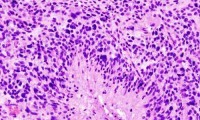-
Researchers Report on Inhibitory Effect of Glioblastoma Signals to Macrophages
- Source: drugdu
- 126
- July 21, 2023
-
Researcher reach milestone in the treatment of anemia in chronic lymphocytic leukemia
- Source: drugdu
- 103
- July 6, 2023
-
Researchers discover new weapon against antibiotic resistance—it also fights malaria
- Source: drugdu
- 117
- July 4, 2023
-
Psylo signs research deal with Daiichi Sankyo for psychiatric therapies
- Source: drugdu
- 181
- June 26, 2023
-
World Health Organization publishes research agenda for antimicrobial resistance
- Source: drugdu
- 107
- June 26, 2023
-
Research reveals a potential gap in recommended care for people with obesity and overweight
- Source: drugdu
- 257
- June 20, 2023
-
New research shows illusions are in the eye, not the mind’s neurons
- Source: drugdu
- 106
- June 17, 2023
-
Canadian Institutes of Health Research selects Altmetric and Dimensions from Digital Science’s flagship products
- Source: drugdu
- 109
- June 16, 2023
-
Researchers identify microRNAs associated with a weakened immune response to COVID-19
- Source: drugdu
- 115
- June 13, 2023
-
Researchers uncover new insights into why individuals are affected differently by COVID-19 infection
- Source: drugdu
- 106
- June 13, 2023
your submission has already been received.
OK
Subscribe
Please enter a valid Email address!
Submit
The most relevant industry news & insight will be sent to you every two weeks.













